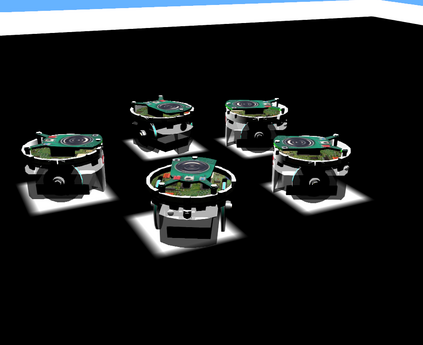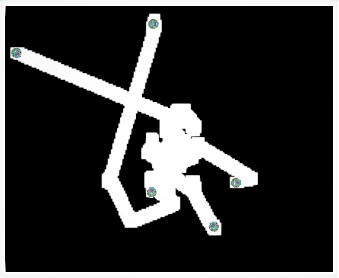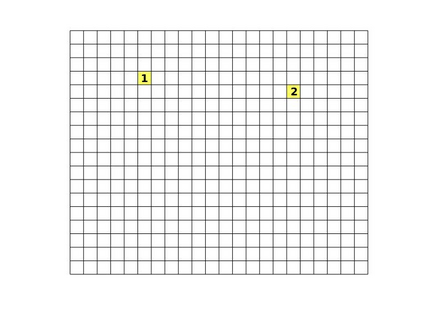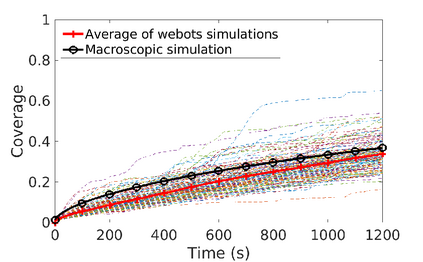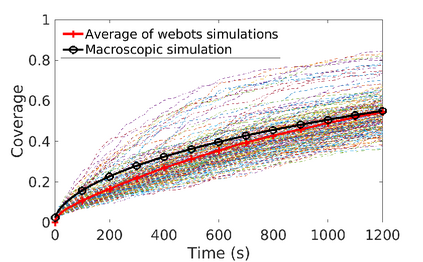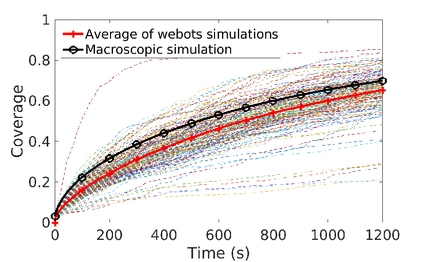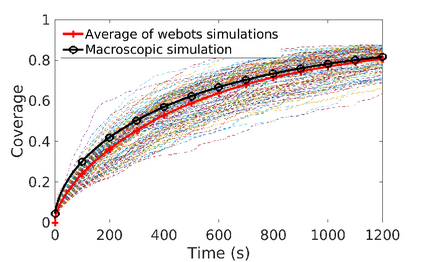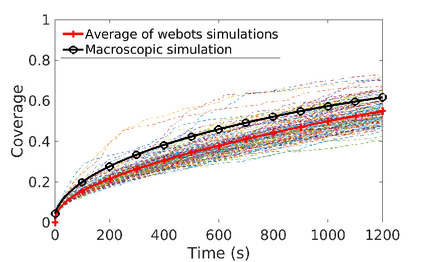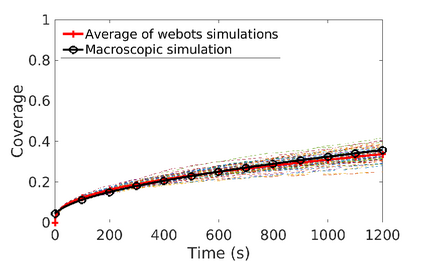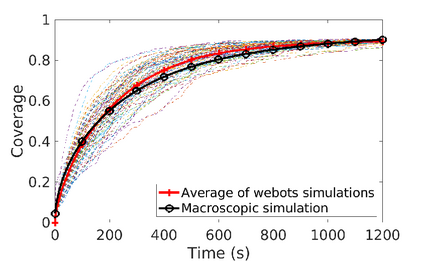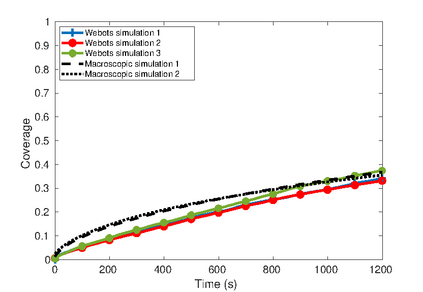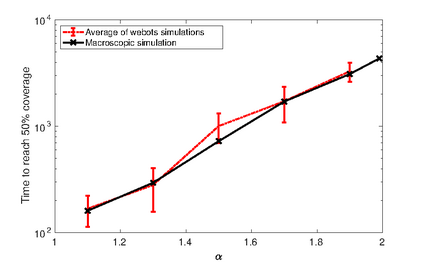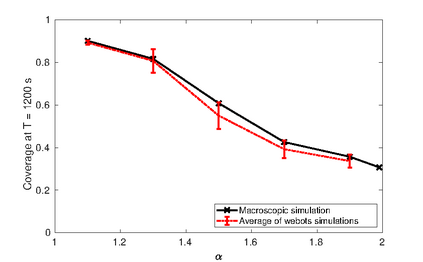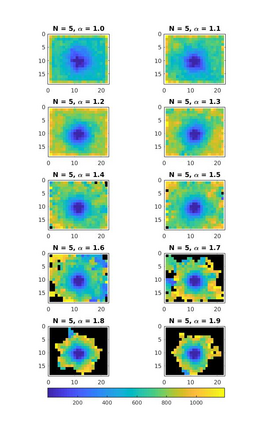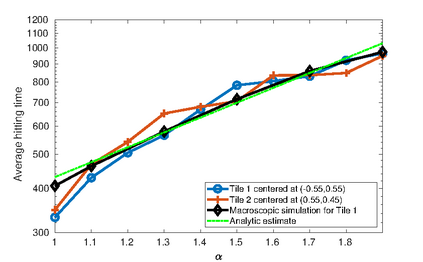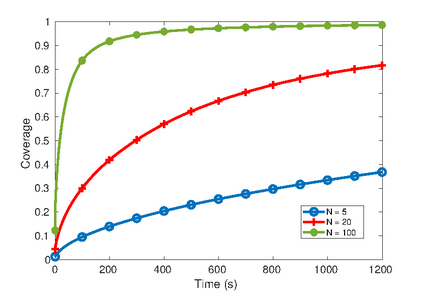Biologically inspired strategies have long been adapted to swarm robotic systems, including biased random walks, reaction to chemotactic cues and long-range coordination. In this paper we apply analysis tools developed for modeling biological systems, such as continuum descriptions, to the efficient quantitative characterization of robot swarms. As an illustration, both Brownian and L\'{e}vy strategies with a characteristic long-range movement are discussed. As a result we obtain computationally fast methods for the optimization of robot movement laws to achieve a prescribed collective behavior. We show how to compute performance metrics like coverage and hitting times, and illustrate the accuracy and efficiency of our approach for area coverage and search problems. Comparisons between the continuum model and robotic simulations confirm the quantitative agreement and speed up of our approach. Results confirm and quantify the advantage of L\'{e}vy strategies over Brownian motion for search and area coverage problems in swarm robotics.
翻译:长期以来,生物启发型战略已经适应了群装机器人系统,包括偏差随机行走、对化学信号的反应和远程协调。本文中我们应用为生物系统建模开发的分析工具,如连续描述,对机器人群进行有效的定量定性。举例来说,讨论了具有典型长程移动特点的布朗和L\{e}战略。因此,我们获得了优化机器人移动法的计算快速方法,以达到规定的集体行为。我们展示了如何计算覆盖和打击时间等性能指标,并展示了我们处理区域覆盖和搜索问题的方法的准确性和效率。连续模型和机器人模拟之间的比较证实了定量协议并加快了我们的方法。结果确认并量化了L\{e}战略相对于布朗运动在热量机器人搜索和覆盖问题上的优势。


